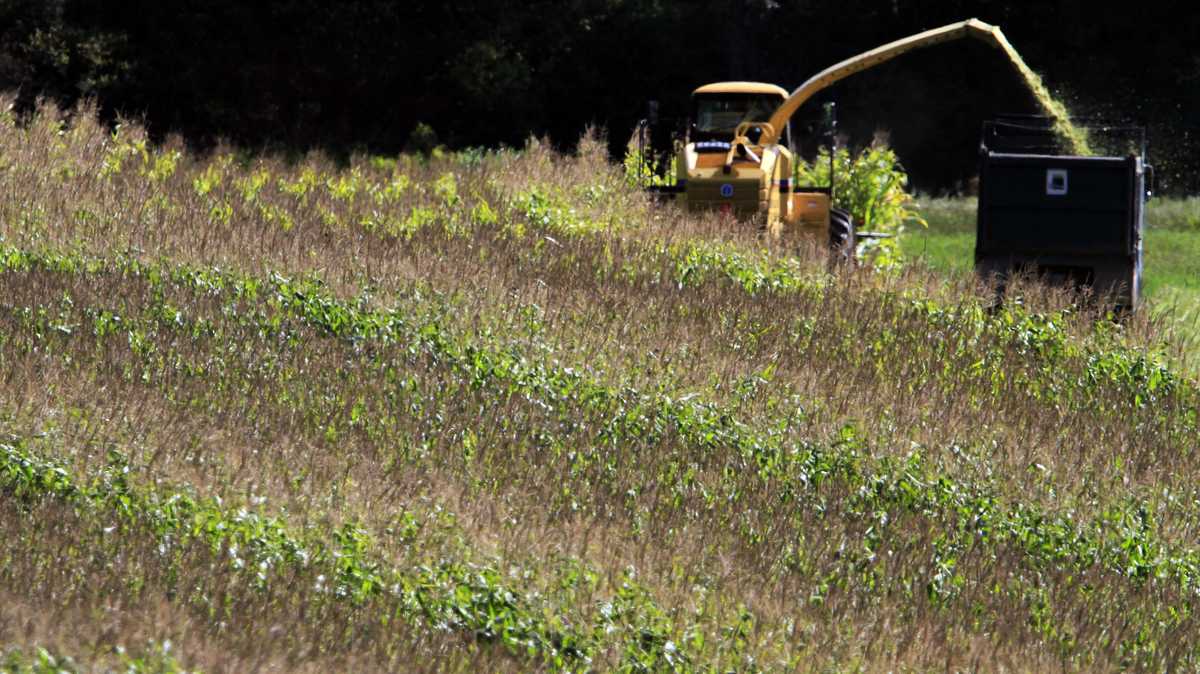Maine is losing farms quickly, report finds
Maine is losing farms and farm land quickly, report finds WMTW Portland


Report: Decrease in Farms in Maine

Introduction
A new federal report reveals a decline in the number of farms in Maine, reaching the lowest level in over 25 years. The report, released by the United States Department of Agriculture, presents the findings of the 2022 Census of Agriculture. It indicates that in 2022, there were approximately 7,036 farms covering 1.23 million acres of farmland. This represents a decrease from the peak of 8,173 farms and 1.45 million acres recorded in 2012. Since the last census in 2017, Maine has lost 564 farms and 82,567 acres of farmland.
Land and Building Values
Despite the decrease in the number of farms, the value of agricultural land and buildings has reached an all-time high. The estimated market value of land and buildings for the average Maine farm has risen to $649,229, the highest figure since 1997 (adjusted for inflation). Additionally, the average Maine farm experienced its most profitable year in 2022 compared to previous census years, with a market value of agricultural products sold amounting to $123,582.
Agricultural Activities
Specialty crops play a significant role in Maine’s agricultural sector. These crops include maple syrup, Christmas trees, hay, and the nursery and greenhouse sectors. They account for the majority of agricultural activity in the state, contributing to 63.1% of the value from agricultural product sales, which totals $548.5 million. Livestock, poultry, and their products form the second largest commodity group, representing 34.3% of sales value in 2022.
Minimum Wage for Farm Workers
On Wednesday, Governor Janet Mills introduced a bill aimed at establishing a minimum hourly wage for farm workers in Maine. The proposed legislation would require agricultural workers to be paid a minimum wage of at least $14.15 per hour, which is the same as the current minimum hourly wage for other workers under Maine law. Starting in 2025, the minimum wage for agricultural workers would be subject to the same annual cost-of-living increases provided to other hourly workers who are subject to minimum wage requirements.
SDGs, Targets, and Indicators
1. Which SDGs are addressed or connected to the issues highlighted in the article?
- SDG 1: No Poverty
- SDG 2: Zero Hunger
- SDG 8: Decent Work and Economic Growth
- SDG 12: Responsible Consumption and Production
- SDG 15: Life on Land
2. What specific targets under those SDGs can be identified based on the article’s content?
- SDG 1.4: By 2030, ensure that all men and women, in particular, the poor and the vulnerable, have equal rights to economic resources, as well as access to basic services, ownership, and control over land and other forms of property.
- SDG 2.3: By 2030, double the agricultural productivity and incomes of small-scale food producers, in particular, women, indigenous peoples, family farmers, pastoralists, and fishers, including through secure and equal access to land, other productive resources, and inputs, knowledge, financial services, markets, and opportunities for value addition and non-farm employment.
- SDG 8.5: By 2030, achieve full and productive employment and decent work for all women and men, including for young people and persons with disabilities, and equal pay for work of equal value.
- SDG 12.3: By 2030, halve per capita global food waste at the retail and consumer levels and reduce food losses along production and supply chains, including post-harvest losses.
- SDG 15.3: By 2030, combat desertification, restore degraded land and soil, including land affected by desertification, drought, and floods, and strive to achieve a land degradation-neutral world.
3. Are there any indicators mentioned or implied in the article that can be used to measure progress towards the identified targets?
- Number of farms and farmland acres: The decrease in the number of farms and farmland acres in Maine can be used as an indicator to measure progress towards SDG 1.4 and SDG 2.3.
- Market value of land and buildings: The increase in the market value of land and buildings for the average Maine farm can be used as an indicator to measure progress towards SDG 8.5.
- Market value of agricultural products sold: The highest grossing year in 2022 for the average Maine farm can be used as an indicator to measure progress towards SDG 8.5 and SDG 12.3.
- Value from agricultural product sales: The percentage and value attributed to specialty crops and livestock products can be used as indicators to measure progress towards SDG 2.3.
SDGs, Targets, and Indicators
| SDGs | Targets | Indicators |
|---|---|---|
| SDG 1: No Poverty | Target 1.4: By 2030, ensure that all men and women, in particular, the poor and the vulnerable, have equal rights to economic resources, as well as access to basic services, ownership, and control over land and other forms of property. | Number of farms and farmland acres |
| SDG 2: Zero Hunger | Target 2.3: By 2030, double the agricultural productivity and incomes of small-scale food producers, in particular, women, indigenous peoples, family farmers, pastoralists, and fishers, including through secure and equal access to land, other productive resources, and inputs, knowledge, financial services, markets, and opportunities for value addition and non-farm employment. | Value from agricultural product sales |
| SDG 8: Decent Work and Economic Growth | Target 8.5: By 2030, achieve full and productive employment and decent work for all women and men, including for young people and persons with disabilities, and equal pay for work of equal value. | Market value of land and buildings Market value of agricultural products sold |
| SDG 12: Responsible Consumption and Production | Target 12.3: By 2030, halve per capita global food waste at the retail and consumer levels and reduce food losses along production and supply chains, including post-harvest losses. | Market value of agricultural products sold |
| SDG 15: Life on Land | Target 15.3: By 2030, combat desertification, restore degraded land and soil, including land affected by desertification, drought, and floods, and strive to achieve a land degradation-neutral world. | Number of farms and farmland acres |
Behold! This splendid article springs forth from the wellspring of knowledge, shaped by a wondrous proprietary AI technology that delved into a vast ocean of data, illuminating the path towards the Sustainable Development Goals. Remember that all rights are reserved by SDG Investors LLC, empowering us to champion progress together.
Source: wmtw.com

Join us, as fellow seekers of change, on a transformative journey at https://sdgtalks.ai/welcome, where you can become a member and actively contribute to shaping a brighter future.







